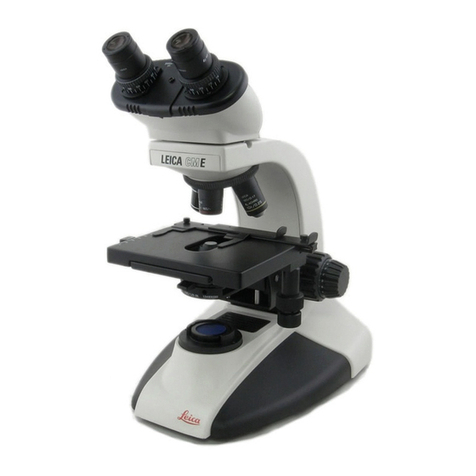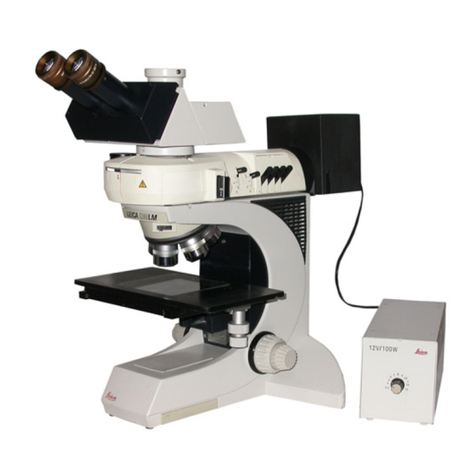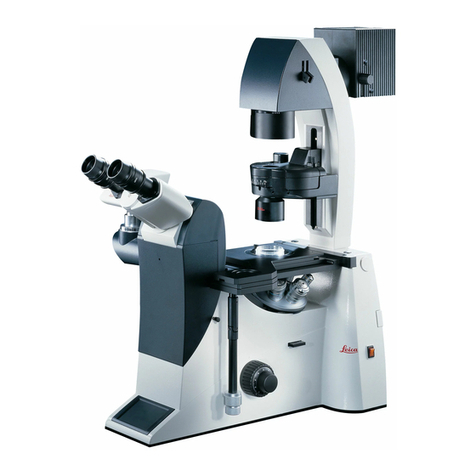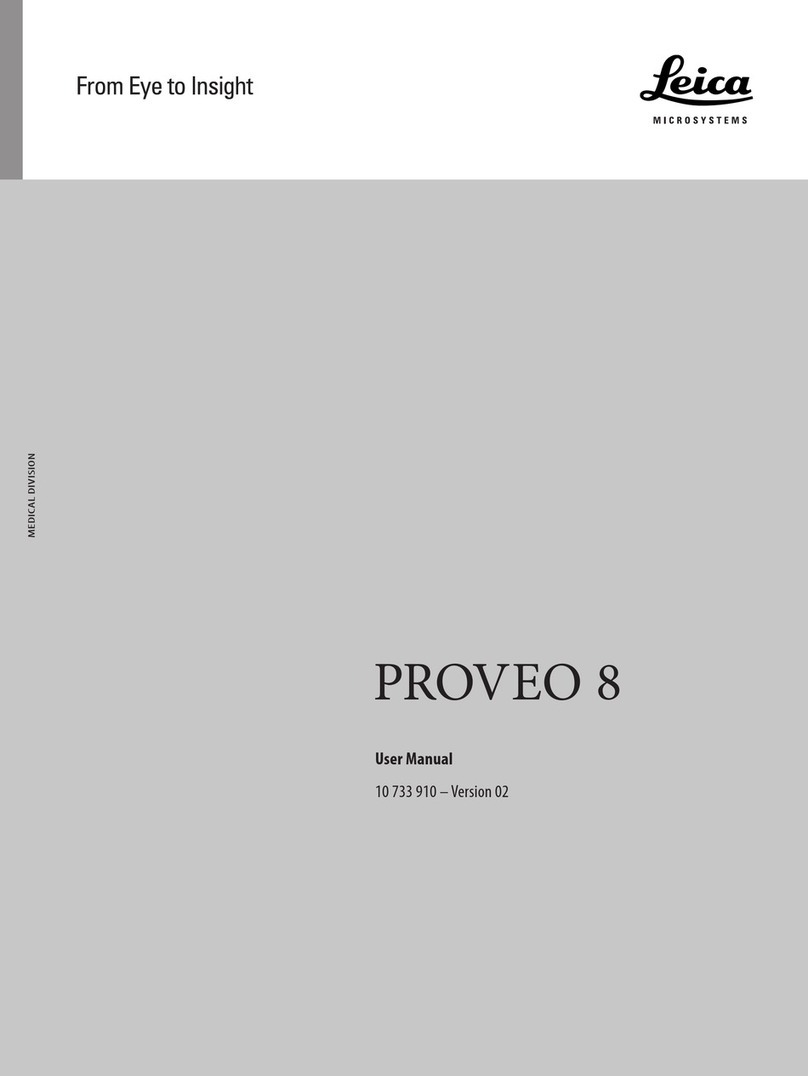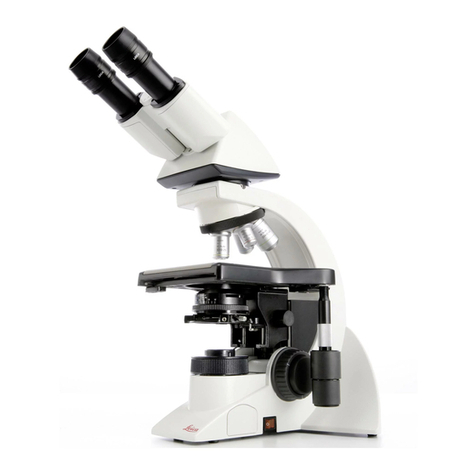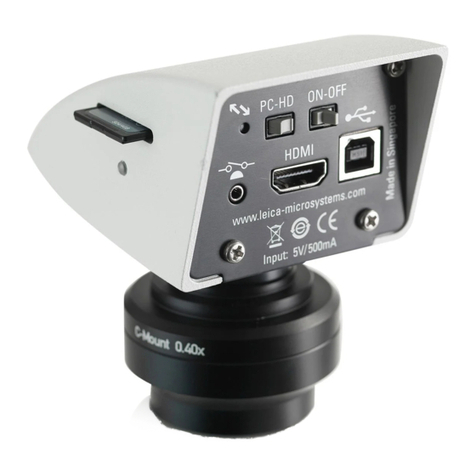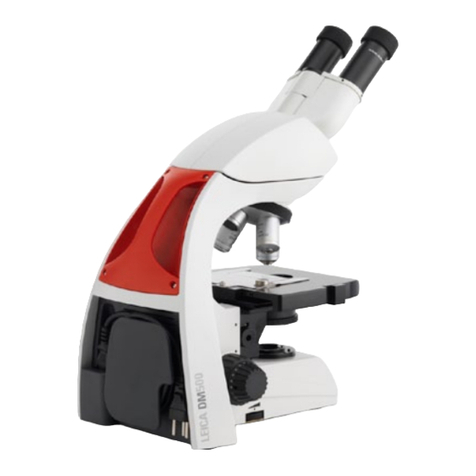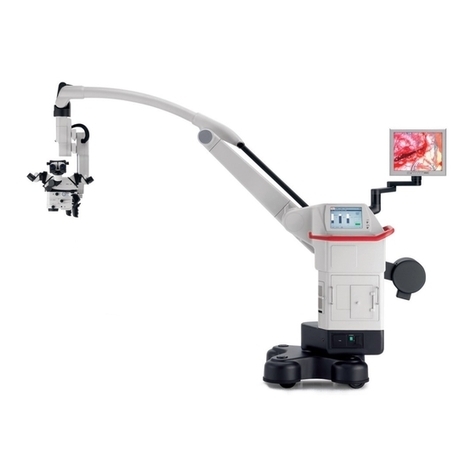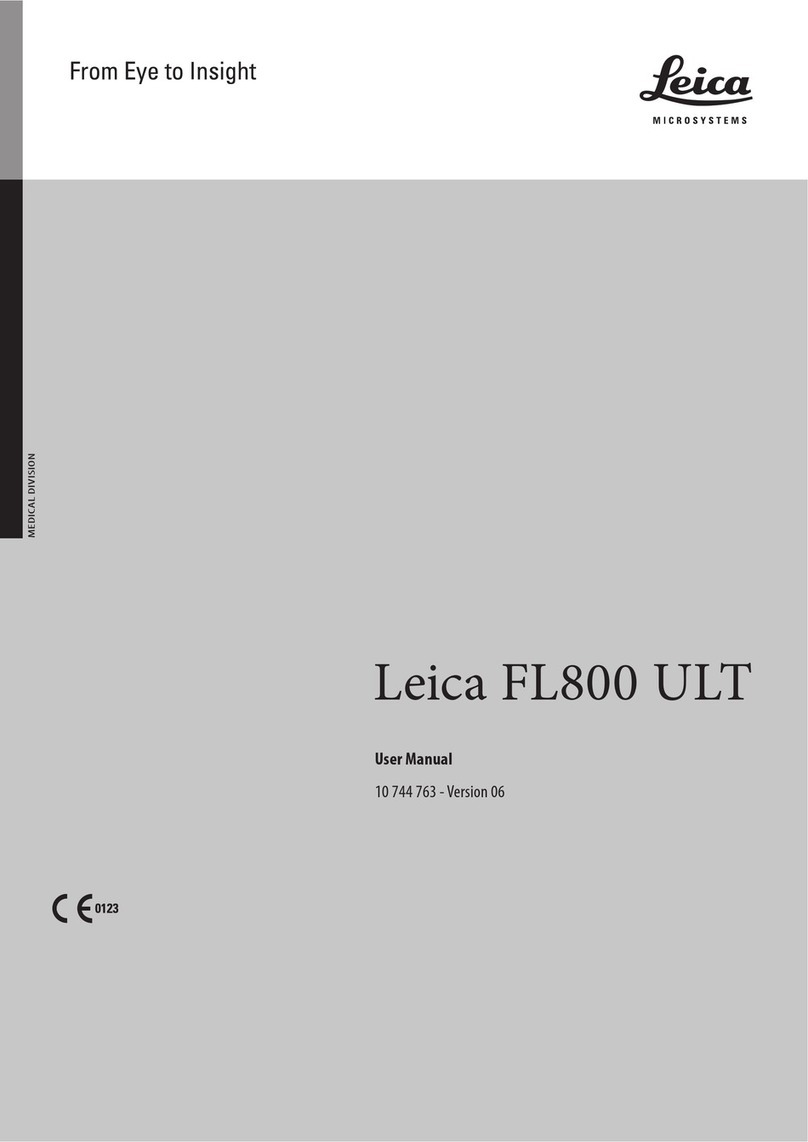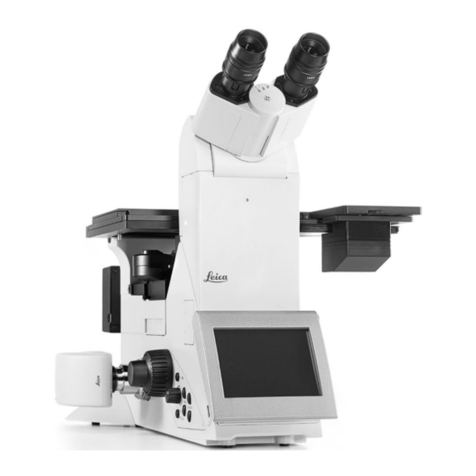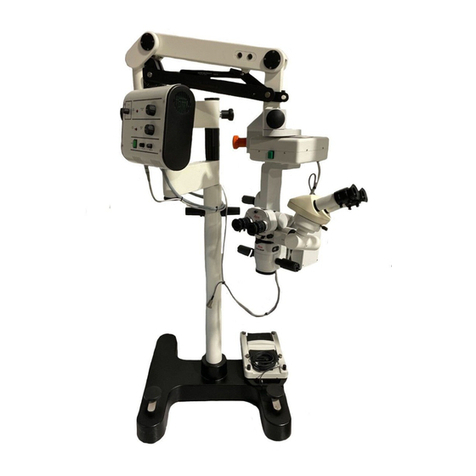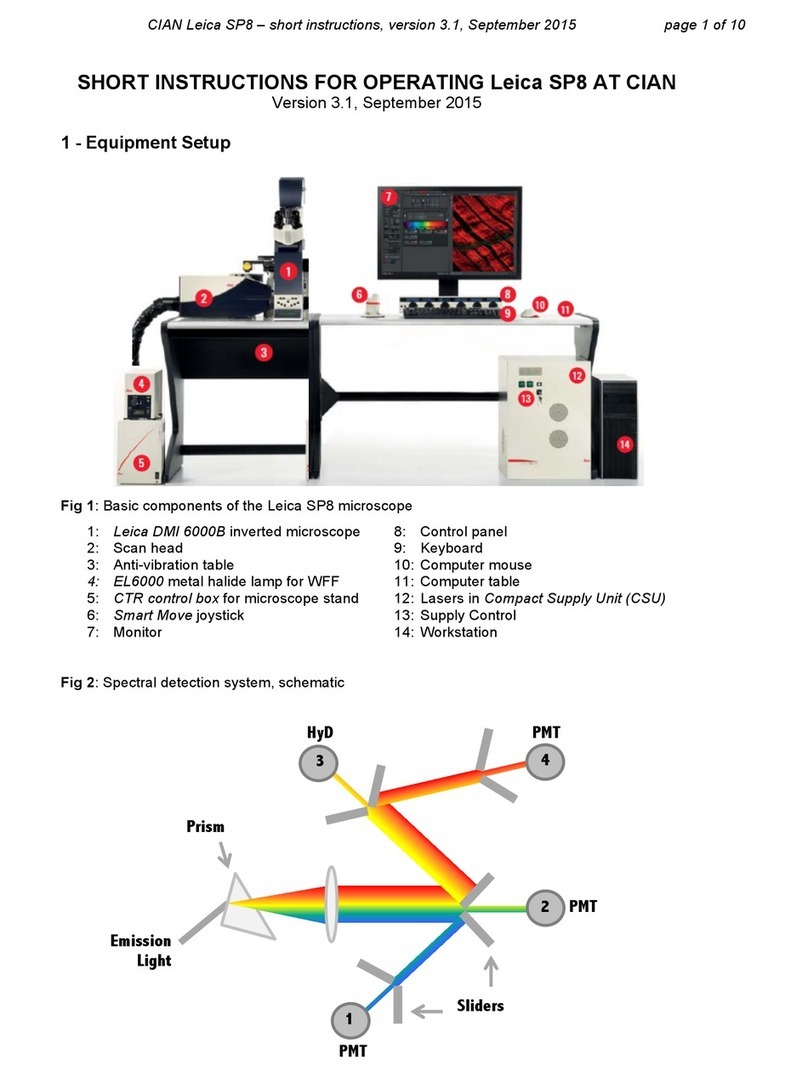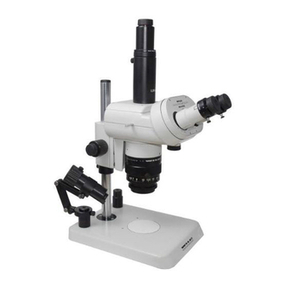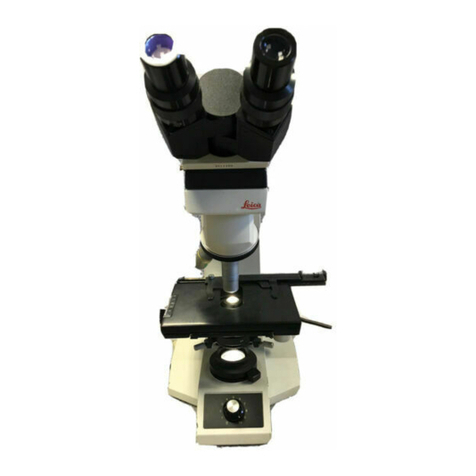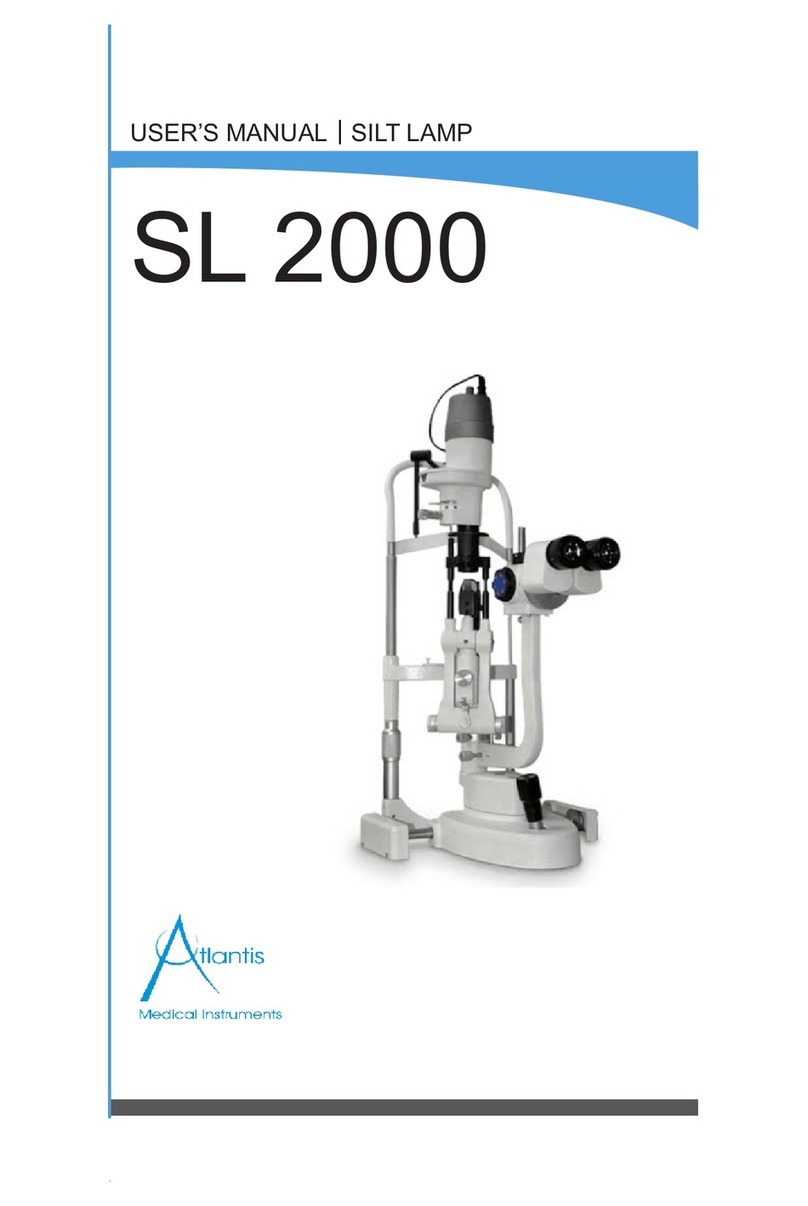
5
Contents
7. Startup ......................................................... 39
7.1 Functional Principle .................................. 39
7.2 Switching on............................................... 46
7.3 The Leica SmartTouch .............................. 47
7.4 The Function Keys at the stand .............. 48
7.5 The Remote Control Element
SmartMove ................................................. 49
7.6 Köhler Illumination .................................... 49
7.6.1 Transmitted Light ............................ 49
7.6.2 Incident Light................................... 51
7.7 Checking Phase Contrast Rings ............. 52
7.8 Adjusting Motorized Polarizer ................ 54
7.9 Adjusting the Light Sources .................... 54
8. Operation .................................................... 60
8.1 Switching on............................................... 60
8.2 Stages and Specimen Displacement .... 62
8.2.1 Manual stage (DM5500 B) ............ 62
8.2.2 Motorized stage (DM6000 B/M)... 63
8.3 Focusing ...................................................... 64
8.4 Tubes ........................................................... 65
8.5 Eyepieces.................................................... 67
8.6 Objectives ................................................... 67
8.7 Magnification Changer............................. 70
8.8 Light Sources ............................................. 70
8.9 Aperture Diaphragm and
Field Diaphragm ......................................... 71
Contents
1. Important Notes about this Manual ...... 7
2. Intended Purpose of Microscopes ........ 8
3. Safety Notes ............................................... 9
3.1 General Safety Notes ............................... 9
3.2 Electrical Safety ........................................ 10
3.3 Disposal....................................................... 11
4. Overview of the Instrument .................... 12
5. Unpacking the Microscope .................... 18
6. Assembling the Microscope .................. 20
6.1 Stage ............................................................ 21
6.2 Condenser ................................................... 22
6.3 Tube and Eyepieces.................................. 23
6.4 Objectives ................................................... 24
6.5 Light Sources for the
Transmitted Light Axis.............................. 24
6.6 Light Sources for the
Incident Light Axis..................................... 26
6.6.1 106 z lamp housing ......................... 26
6.6.2 External light source EL6000 ........ 31
6.7 Equipping the
Incident Light Turret Disc ........................ 32
6.8 Polarizer and Analyzer ............................. 33
6.9 DIC Prisms .................................................. 34
6.10 Optional Accessories ............................... 35
6.11 Connecting the Leica CTR5500/CTR6000
Electronics Box.......................................... 37
6.12 Connecting the Computer ........................ 38
6.13 Connection to the Power Supply............ 38
